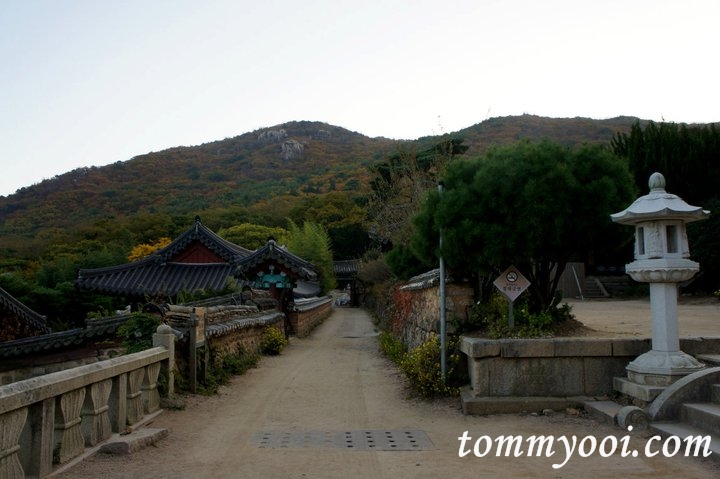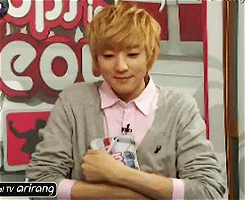Nami Island ( Winter Sonata )
For Korean Drama lovers, Nami Island is a place which does not requires further introduction as this is the birth place of all the Korean Craze. This is one of the place where the famous international
Korean Drama Winter Sonata was filmed. Hence to put it short, it is a must visit for all Asian tourists!
Namiseom Island was formed as a result of the construction of the Cheongpyeong Dam. It is a half moon shaped (462,809㎡) isle, and on it is the grave of General Nami, who led a great victory against the rebels in the 13th year of the 7th king of the Joseon Dynasty, King Sejo (reign 1455 ~ 1468).
Admission Fees
Adults : 8,000 won
Children (ages 3-13) : 4,000 won
Visitors coming after 18:00 (Dec – Mar), after 19:00 (Apr – Nov) : 4,000 won
※ Round-trip ferry fare & tax included
Opening Hours
Daily 7:30am to 9:30pm
Getting there
By Subway + Train + Taxi
Exit Sangbong Station Line 7. Transfer to Gyeongchun Line Train to Gapyeong Station. Take a taxi to Gapyeong Wharf (Just say Nami Island to Driver will do. Taxi cost KRW3,000 to KRW4,000 per way)
Seongsan Ilchulbong Peak
Seongsan Ilchulbong Peak (182 meters high) rose from the sea in a series of volcanic eruptions beginning over 100,000 years ago.
The site resembles an old fortress on a coastal cliff and was originally a volcanic island but was later connected as sand and gravel accumulated in between.
The sunrise seen from the peak is considered one of the most fascinating scenic views in Jeju.
Admission Fees
Age 24-64: 2,000 won / Age 7-23: 1,000 won / 65 and over, 6 and under: Free
Getting there
By Bus
1. From Jeju-si
Jeju Intercity Bus Terminal -> Seongsan Ilchulbong Peak (1 hour 30 min ride/ 20 min interval)
2. From Seogwipo
Seogwipo Intercity Bus Terminal -> Seongsan Ilchulbong Peak (1 hour 30 min ride/ 20 min interval)
Manjanggul Cave
Manjanggul Cave is the longest lava tube in the world. It is 5 meters wide, between 5 to 10 meters high and is over 13 km long.
The lava tube, which formed about 2.5 million years ago, has been well preserved, revealing a splendid interior that is out of this world. Only one kilometer of its total length is open to tourists.
Admission Fees
Adults – 2,000 won / Youth - 1,000 won / Children – 1,000 won
Free – Senior citizens, disabled visitors
Getting there
Bus
From Jeju-si
Jeju Bus Terminal, take the Donghoe Line Intercity Bus to get off at the parking lot near Manjanggul Cave Entrance. (Takes approximately 30 minutes.) At the parking lot, take a town bus bound for Manjanggul or a taxi.
From Seogwipo
Seogwipo Intercity Bus Terminal, take the Donghoe Line Intercity Bus to get off at the parking lot near Manjanggul Cave Entrance. (First Bus: 5:50 a.m. / Last Bus: 8:00 p.m. / 20 Min. Intervals / Takes approximately 1 hour and 30 minutes.)
Tommy Ooi’s Traveling Tips
After reaching Manjanggul bus station, take a taxi from main road to Manjanggul Cave as it isNOT WITHIN WALKING DISTANCE from main road, unless you are up to a 45 minutes walk challenge.
Cheonjiyeon Falls
Cheonjiyeon Falls create a splendid view of water falling from a steep cliff with a sound that drowns out all others.
Cheonjiyeon, meaning “God’s pond,” derives its name from the legend that the seven fairies serving the King of Heaven came down to the pond on stairs of cloud and bathed in its clean waters.
The waterfall is 22m high, 12m wide and 20m in depth. The clear and deep water of Cheonjiyeon Falls is renowned as a habitat for Mutae eels. Also, the annual Seven Fairies Festival is held every May.
Admission Fees
Adult ( Above 24 Years Old ): 2,000 won / Youth ( 15 – 24 ): 1,000 won / Child ( 7-14 ): 1,000 won
Getting there
From Seogwipo – Take a taxi as it is more convenient.
Hallasan Mountain
Situated in the heart of Jeju Island, Mount Hallasan (1,950 meters) is the highest mountain in Korea and a dormant basalt volcano.
About 360 parasitic cones, or oreum in the Jeju dialect, are found on the volcano’s flanks, creating a remarkable landscape. On top of the mountain is a crater lake called Baengnokdam, which is 3 kilometers in circumference and 500 meters in diameter.
The landscape is beautiful throughout the year and a diverse and rare ecosystem can be found at different altitudes. As such, Mount Hallasan is a Natural Conservation Area.
Admission Fees
Adults: 1,600 won / Youths: 600 won / Children: 300 won
Getting there
Bus
From Jeju-Si
From Jeju Intercity Bus Terminal, take an intercity bus bound for Seongpanak (first bus 6:00 / last bus 21:30 / 10 min interval / 35 min ride / 1,700 won). Get off at the entrance Seongpanak.
Teddy Bear Museum
If you love Teddy Bears, then this is a MUST VISIT place. The Teddy Bear Museum lives up to its name, boasting quite an impressive variety that have been loved for more than a hundred years the world over.
There are two galleries that boast teddy bears from various countries. You can also enjoy yourself at the museum shop, café, restaurant or the outdoor park where you can view the spectacular Jungmun Sea.
Admission Fees
Adult : 7,000 won / Youth : 6,000 won / Child, Senior & Disabled visitors : 5,000 won
Getting there
Bus – Take Airport Limousine Bus & stop at Jungmun Tourist Resort Complex
Yeomiji Botanic Garden
Yeomiji Botanical Garden at Jungmun Tourist Complex is the largest botanical garden in Asia, the magnificent glass Yeomiji Conservatory has collected and displayed 1,200 species of subtropical and tropical plants.
Yeomiji is a Chinese word consisting of three letters with “yeo” meaning “such,” “mi” “beauty” and “ji” “land,” which combines to mean a “garden paradise”.
In Yeomiji Garden, there are several greenhouses with different theme - flower garden, an aquatic plant garden, cactus and succulents garden, jungle garden & tropical fruits garden.
Admission Fees
Adult – KRW7,000
Getting there
Bus – Take Airport Limousine Bus & stop at Jungmun Tourist Resort Complex
Jeongbang Falls
Jeongbang Falls (정방폭포) is only water fall in Asia that falls directly into the ocean.
On the wall of the water fall, there is an inscription written “Seobulgwacha”, referring to Seobul passing by this place. Seobul was a servant of the Chinese Emperor Jin (BC 259~210) who was ordered by the Emperor to find the substance that would make him immortal.
Seogwipo is also said to have gotten its name to mean Seobul headed back west.
Admission Fees
Adults 2,000 won / Children 1,000 won
Getting there
From Seogwipo – Take a Taxi as it is much more convenient.
Yakcheonsa Temple
Yakcheonsa, which means ‘temple where medicinal water flows,’ was built in 1981 by Buddhist monk Hae-in. He founded the temple after visiting the small cottage that was originally found on the site.
Visitors to Yakcheonsa will have plenty to explore. The main temple has multiple floors and balconies that overlook a beautiful three-meter-tall Buddha, contained in a large prayer hall. The main temple is filled with murals of Buddhist legends.
Admission Fees
FREE
Getting there
Bus – Take Airport Limousine Bus & stop at Yakcheonsa Bus Station
Jusangjeolli Cliffs
Jusangjeolli Cliffs refer to the set of blackish, rock pillars of rectangular or hexagonal shapes on the east coast of Jungmun Tourist Resort. As if carved by stonemasons, the pillars are evidence of nature’s awesome power.
Most commonly expressed as vertical columnar jointing, the formations are created via sudden cooling of lava that shrinks in mass. The sight of waves crashing against the columns is both serene and beautiful.
On days with rough weather, waves can rise as high as 20 meters.
Admission Fees
Adult 2,000 won / Youth and Child 1,000 won
Getting there
Bus - Take Airport Limousine Bus & stop at International Convention Center. Keep walking to the right direction(5 min walk).
Cheonjeyeon Falls
Cheonjeyeon Falls (천제연폭포), named ‘The pond of God’, consists of 3 parts. Around the falls, a variety of plant life thrives, such as the rare ‘solipnan’ reeds. To the east, there is a cave where cold water pours from the ceiling to create a waterfall.
Admission Fees
Adults 2,500 won / Youths 1,370 won / Children 1,370 won
Getting there
Bus – Take Airport Limousine Bus & stop at Jungmun Tourist Resort Complex
Yongduam Rock
Situated to the north of Jeju City, Yongduam was created by strong winds and waves over thousands of years. However, there are plenty of other stories of how it came to be.
One legend has it that a dragon stealing precious jade from Mt. Halla was shot down by an arrow from the mountain deity. When he fell down on Yongduam, his body immediately sank into the ocean and his head rapidly froze looking at the sky.
Another legend has it that a white horse, who dreamed of being a dragon and ascending to the sky, came to be caught by a soldier and froze into the rock.
Admission Fees
FREE
Getting there
From Jeju Airport
Bus – take any airport bus except No. 200,300 and get off at Yongdam 2-dong Office. Walk 15 min.
Taxi – Approx 15 min (about 4,000 won).
Jeju Folk Village Museum
With a total of 117 houses and facilities, Jeju Folk Village Museum has restored the scenes of the village to that of the 1890’s. Among them are Mountain Village, Hill-Country Village, Fishing Village and Shamanism Village.
On land of more than 40 acres it has been reconstructed following long-term research and analysis of experts. Some of the extensive range of folk items on display are 1,627 woodenware, 1,046 bamboo ware, 1,699 earthenware, 1,544 porcelain ware, 765 wax candles, 921 ironware and 579 other items.
The Jeju Folk Village Museum is the island’s main tourist attraction where customs of the old days can be explored.
Admission Fees
Adult : 7,000 won / Youth : 4,500 won / Child : 3,500 won
Getting there

Seonimgyo Bridge
Seonimgyo Bridge is an arch bridge on Jeju Island over Cheonjeyeon Waterfall that has seven nymphs carved on both sides.
The bridge is also called Chilseonyeogyo (칠선녀교) or Seven Nymphs Bridge.
The nymphs symbolize the Korean legend of the descent of seven beautiful nymphs from heaven at night. Seonimgyo Bridge is the first arch bridge or Ojakgyo (오작교) design in the region.
Admission Fees
Adult – 2,500 won
Getting there
Bus – Take Airport Limousine Bus & stop at Jungmun Tourist Resort Complex
Jungmun Beach
Jungmun Beach (중문해수욕장) has a sandy shore so fine that it is called Jinmosal. The white sand beach is 560m long and the water has an average depth of 1.2m.
Different shades of black, red, and grey are beautifully mixed into the white sand of the beach. This helps to accentuate Jeju-do Island’s black Hyeonmuam stones. To the right side of the beach is a natural sea cave called Haesikgul Cave.
Admission Fees
FREE
Getting there
Bus – Take Airport Limousine Bus & stop at Jungmun Tourist Resort Complex. Then take a taxi to Jungmun Beach ( 5 mins ride ).
Beomeosa Temple

Nestled on the slope of the mountain Geumjeongsan, Beomeosa is an old Buddhist temple with a long history of 1,300 years. It was constructed by monk Ui Sang in the 18th year (678) of King Munmu (reign 661~681) of the Silla Kingdom
The temple contains numerous cultural properties and relics such as the Three-story Pagoda and the main hall Daeungjeon.
Opening Hours
Daily 08:30~17:30
Getting there
By Metro & Bus : Exit 5 or 7, Beomeosa Station. Walk up a slope beside a bakery shop. Then take Bus No. 90.
Jagalchi Fish Market
The Jagalchi Fish Market is Korea’s most famous & largest seafood market. During your visit, you can eat fresh raw fish right at the market. One of the must visit Busan attractions.
Opening Hours
Daily 5am to 9pm
Getting there
By Metro : Jagalchi Station Line 1 – Exit 10. Walk 5 mins.
Gwangalli Beach
Gwangalli Beach (광안리해수욕장) is 1.4 km long, 64m wide, and is famous for its fine sand. Around the beach, there are unique restaurants, cafes, and over 300 raw fish restaurants.
Nearby, Gwangan Bridge Korea’s largest double-leveled bridge for cars only, is a must-see in Busan because of the illuminating lights that can produce over 100,000 colors matching the night view of the beach.
Getting there
By Metro : Gwangan Station Line 2 – Exit 5. Walk 10 mins.
Taejongdae Resort Park
Taejongdae is a natural park of Busan, South Korea with magnificent cliffs facing the open sea on the southernmost tip of island of Yeongdo-gu.
The park was named after the 29th king of Silla Dynasty BC57~AD 935), King TaeJong Mu-Yeol (604~661). King TaeJong had traveled to many places but this was the place he enjoyed shooting arrows.
Admission Fees
Danubi Train Ticket Price : Adults 1,500 won / Youths 1,000 won / Children 600 won
Opening Hours
Daily 04:00am – 10:00pm
Getting there
By Bus : From Busan Station, take city bus # 88 or 101. Get off at Taejongdae Park (10 min interval / 40 min ride).
Haeundae Beach
Haeundae Beach (해운대해수욕장) is probably the most famous beach in the country. “Haeundae” was so named by scholar Choi Chi-Won (857~?) of the Silla Dynasty (BC 57~AD 935). When he was walking past Dongbaekdo Island, he was fascinated by it and left the carved words “Hae Un Dae” on a stone wall on the island.
Opening Hours
Every early July ~ late August (depends on the weather)
Getting there
By Metro : Exit 3 or 5, Haeundae Station Line 2. Walk 10 mins.
Yonggungsa Temple
Haedong Yonggungsa Temple is situated on the coast of the north-eastern portion of Busan. The temple was first built in 1376 during the Goryeo Dynasty. During the reign of Uwang, the great Buddhist teacher known as Naong established this temple beside the sea.
Opening Hours
Daily 04:00 – 19:00
Getting there
By Metro & Bus : Exit 7, Haeundae Station Line 2. Take bus 181 and get off at Yonggungsa Temple.
Changseondong Meokja Golmok
This is a “Let’s Eat” alley which offers a pleasure of eating snack cooked on the spot in the alley. Nowhere else can you find a place where you can have such a choice of delicious food.
The Chungmu Kimbab (a sort of seaweed roll), bibimbab (cooked rice mixed with hot-pepper paste, vegetables and ground beef), and pajeon (Korean scallion pizza) are absolutely delicious.
Getting there
By Metro : Exit 7, Jagalchi Station Line 1. 200m to Gwabgbokro and turn right toward Changseonsamgeori. 10 mins walk. You can also start from PIFF square.
Busan Aquarium
The Busan Aquarium located at the entrance to Haeundae Beach, is an ultra high-tech submarine theme aquarium, contains over 35,000 species of fish, algae, reptiles, and amphibians.
It offers visitors chances to experience everything about the underwater ecosystem.
Admission Fees
Adults (ages 19 and up): 19,000 won / Youths (ages 13-18): 17,000 won / Children (ages 3-12): 15,000 won
Opening Hours
Mon-Thu : 10:00-20:00 / Fri-Sun & Holidays: 09:00-22:00
Getting there
By Metro : Exit 3 or 5, Haeundae Station Line 2. Walk 10min towards Haeundae Beach.
Hur Shim Chung Spa
One of the oldest spas in Korea. The waters contain abundant magnesium, and temperature is around 55℃. This massive hot spring complex claims to be the largest in Asia with hot, tepid, cold and strawberry milk-filled baths, saunas, pools, and an outdoor section.
On the 3rd floor is a large jjimjilbang resting area, containing (among other things) a restaurant, a beauty salon, an oxygen room, and three ‘igloos’ heated to 81°C, 51°C and 0°C.
Admission Fees
Entry to the spa is ₩8,000, additional ₩2,000 on Sunday/holidays.
Opening Hours
Daily 5:30 – 22:00 (Entry allowed until 21:00)
Getting there
By Metro : Exit 1, Oncheonjang Station. Cross the street and make a beeline for Hotel Nong Shim, the spa is located opposite the hotel connected by a walkway. 10 mins walk.
Kamsahamnida , Keep in touch !





.jpg)
-p1.jpg)































